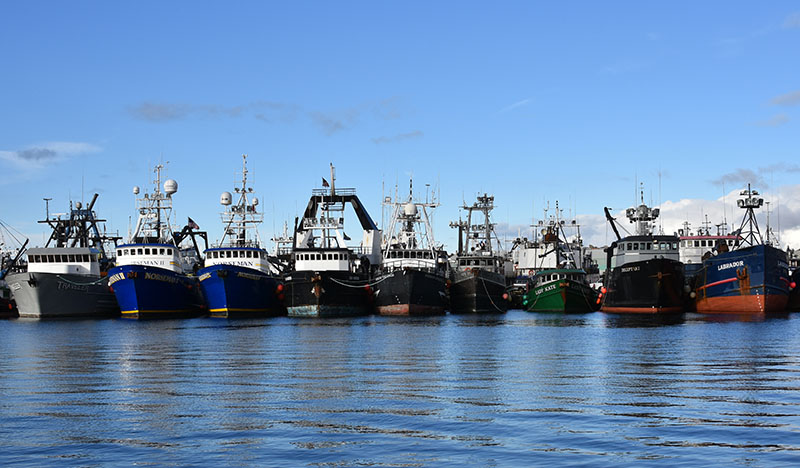An updated analysis of the covid-19 pandemic’s effect on the U.S. fishing and seafood industry shows an across-the-board 22 percent decline in commercial landings revenue during 2020 compared to the previous five-year average, NMFS experts said.
The previously growing aquaculture sector “continued to struggle despite the incremental re-opening of restaurants beginning in May 2020,” while the recreational sector saw a 17 percent decline in trips during 2020, the NMFS report states.
“Our analysis shows that the covid public health crisis created a turning point for the U.S. and the global seafood industry,” agency officials said in releasing the new report, updating the original analysis from January 2021. “It created new long-term challenges to expanding our sustainable domestic seafood sector.”
Food service sales fell 40 percent in the “first quarter of covid-19,” defined as March through May 2020, relative to average sales in the three preceding quarters, the report states.
Mollusk shellfish including scallops, oysters and mussels incurred the highest losses, down 60 percent. For the longer period of March to November 2020, those sales were down 21 percent relative to the three preceding quarters.
While fishermen were slammed with loss of business and revenue, seafood retail sales paradoxically surged during 2020 as consumers stayed home, stocking their own freezers and pantries. The report notes another study by the Food Industry Association tracked U.S. seafood retail sales “increased significantly in 2020 across all seafood categories: frozen, up 36 percent; fresh, up 25 percent; and grocery (canned, pouches, etc.), up 21 percent.”
The NMFS paper breaks down losses by sectors and regions, echoing earlier surveys and reports by university and Sea Grant programs.
Overall commercial fishing landings revenue declined 22 percent in 2020 relative to the five years preceding in 2015–2019, with all regions experiencing a significant decline.
“Relative to the baseline period, regional landings revenue from March to December 2020 were down 16 percent to 36 percent,” with Atlantic highly migratory species like tuna and swordfish off 15 percent; Northeast fisheries down 18 percent; the Southeast, losing 27 percent; Alaska and the West Coast down 29 percent; and Hawaii, where losses hit 36 percent.
High-value and export products were hit hardest, especially in the early months of the pandemic, the report notes. The markets remained depressed into the fourth quarter of 2020 until the Northeast finally saw a 4 percent increase in landings revenue in October 2020, the Atlantic highly migratory species fleet landed a 21 percent revenue increase in November 2020.
“Shellfish growers were particularly hard hit given their reliance on export markets and restaurant services,” the report says. “A series of industry surveys conducted by Virginia Tech and Ohio State found that the highest impacts were incurred during the first quarter but that high impacts persisted for the remainder of the year.”
Some 80 percent of growers reported cancelled contracts in the first quarter off 2020, and 44 percent of this respondents saw customers cancel contracts for the rest of the year as well.
Fishermen in every region reported they had to stop working for at least part of the year, and estimated that overall their fishing efforts in 2020 were around one-half to two-thirds of their usual production.
Almost all reported revenue losses relative to 2019, with the highest reported at 65 percent by fishermen in Puerto Rico and 55 percent in the U.S. Virgin Islands.
“The analysis identified a significant and sustained contraction in the commercial fishing sector beginning from the first quarter of 2019 through the second quarter of 2020,” the report says. “Seasonally adjusted quarterly total U.S. ex-vessel revenue fell by 27 percent over this period, from a peak of $1.3 billion to a low of $953 million.”







